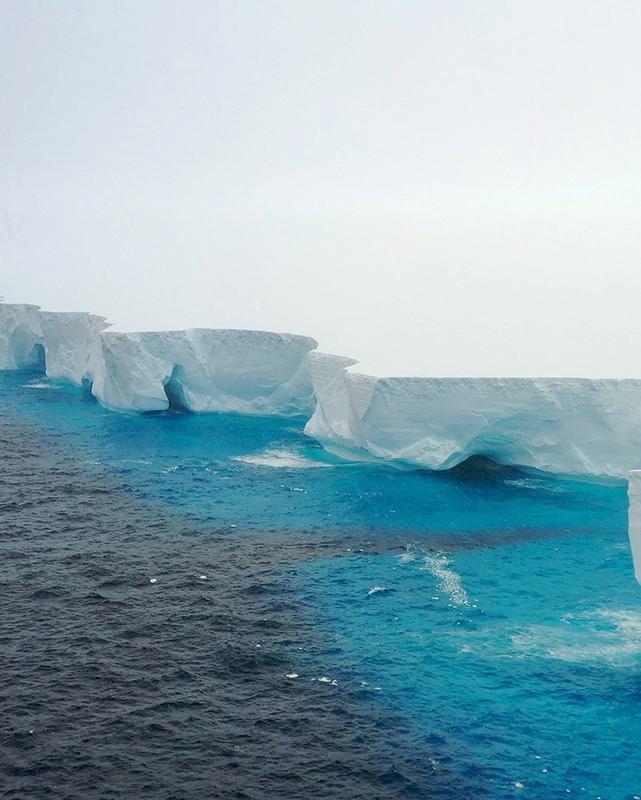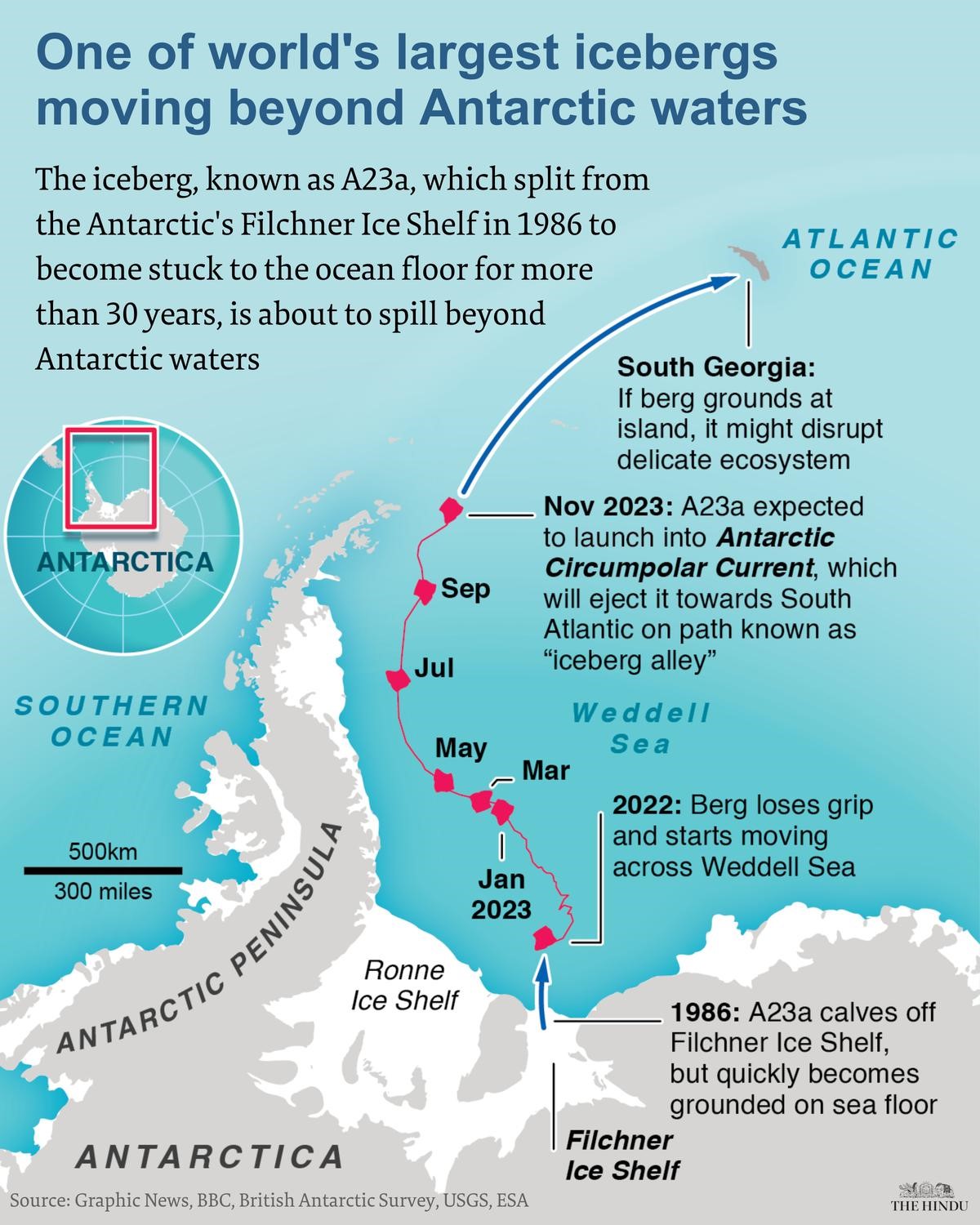Description

Disclaimer: Copyright infringement not intended.
Context
- World’s biggest iceberg battered by waves as it heads north.
Details
A23a Iceberg
- A23a first broke off the Antarctic coast in 1986, making it the world’s oldest iceberg as well as its largest.
- Size: The tooth-shaped iceberg named A23a is nearly 4,000 sq. km across, making it more than twice the size of Greater London. It contains an estimated one trillion tonnes of freshwater that is likely to melt off into the ocean along the way.
Movement:
- It was then stuck on the sea bed for many years but then started moving in 2020. Its area is about 3,900 square kilometres (1,500 sq mi), which made it one of the largest icebergs in the world until it was temporarily surpassed in size by A76.
- In 2023, A23a broke free from its icy shackles and started venturing north.
- After three decades stuck to the Antarctic ocean floor, A23a is now heading north on what could be its final journey.
- The iceberg, which is up to 400 metres thick in places, is currently drifting between Elephant Island and the South Orkney islands.

Concern:
- Whether or not this was caused by climate change — winter Antarctic sea ice reached its lowest level on record last year — remains an open question.
- But he emphasised such icebergs are “part of a huge system that is changing dramatically”.
- As the iceberg is “ejected out into the Southern Ocean”, warmer waters and bigger waves will start to break it up.

Conclusion
In Antarctica the annual loss amounts to only one ten-thousandth of its mass, so the ice sheet is an enormous passive reservoir. However, if losses from iceberg calving and ice-shelf melting are greater than gains from snowfall, global sea levels will rise.
|
PRACTICE QUESTION
Q. The term “A23a” often mentioned in news, is related to which of the following?
A. Malware
B. Operating system
C. Celestial body
D. Iceberg
Answer: D
|













